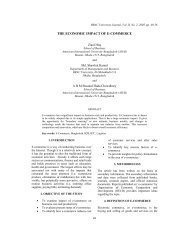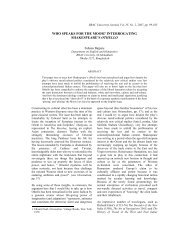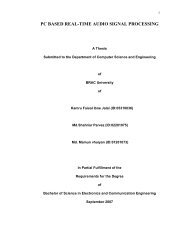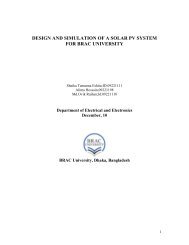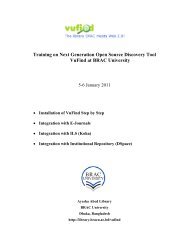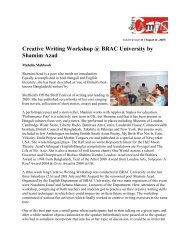LITERATURE SURVEY OF AUTOMATIC FACE RECOGNITION ...
LITERATURE SURVEY OF AUTOMATIC FACE RECOGNITION ...
LITERATURE SURVEY OF AUTOMATIC FACE RECOGNITION ...
Create successful ePaper yourself
Turn your PDF publications into a flip-book with our unique Google optimized e-Paper software.
Gender researchers found surprisingly consistent differences of face<br />
recognition rates related to gender. In two databases (AR and FERET) the<br />
recognition rate for female subjects is higher than for males across a range of<br />
perturbations. One hypothesis is that women invest more effort into modifying<br />
their facial appearance, by use of cosmetics, for instance, which leads to greater<br />
differentiation among women than men. Alternatively, algorithms may simply be<br />
more sensitive to structural differences between the faces of women and men.<br />
The finding that algorithms are more sensitive to women’s faces suggests that<br />
there may be other individual differences related to algorithm performance.<br />
Algorithms may, for instance, prove more accurate for some ethnic groups<br />
or ages than others. These experiments in total show that challenging problems<br />
remain in face recognition. Pose, occlusion, and time delay variation in particular<br />
present the most difficulties. While study has revealed many challenges for<br />
current face recognition research, the current study has several limitations.<br />
One, we did not examine the effect of face image size on algorithm<br />
performance in the various conditions. Minimum size thresholds may well differ<br />
for various permutations, which would be important to determine.<br />
Two, the influence of racial or ethnic differences on algorithm performance<br />
could not be examined due to the homogeneity of racial and ethnic backgrounds<br />
in the databases. While large databases with ethnic variation are available, they<br />
lack the parametric variation in lighting, shape, pose and other factors that were<br />
the focus of this investigation.<br />
Three, faces change dramatically with development, but the influence of<br />
change with development on algorithm performance could not be examined.<br />
Fourth, while we were able to examine the combined effects of some<br />
factors, databases are needed that support examination of all ecologically valid<br />
combinations, which may be nonadditive. The results of the current study<br />
suggest that greater attention be paid to the multiple sources of variation that are<br />
likely to affect face recognition in natural environments<br />
21






